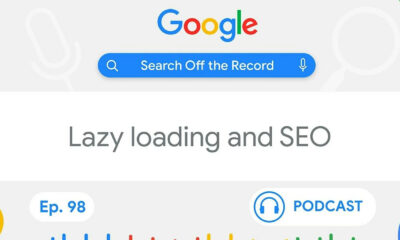SEO
W3C Announces Major Change

The Worldwide Web Consortium (W3C), the standards body in charge of web standards such as HTML and browser privacy, announced a significant change in how it will operate. Beginning on January 2023, the W3C will become a new public-interest non-profit organization.
Worldwide Web Consortium (W3C)
While many turn to Google to understand how to use HTML elements like titles, meta descriptions, and headings, the W3C created the actual specifications for how to use them.
The W3C is vital for the future of the entire web because it is developing privacy standards with stakeholders from around the world and the technology sector.
Stakeholders such as Google, Brave browser, Microsoft and others are involved in developing new standards for how browsers will handle privacy.
However, there are others with a stake in tracking users across the web via third-party trackers, who also belong to the W3C, who are trying to influence what those new privacy standards will be.
A news report (A privacy war is raging inside the W3C) on the internal W3C struggle for what the future of web privacy will resemble quoted the director of privacy for anti-tracker browser Brave stating that some members of the W3C who are contributing to the discussion are trying to water down privacy standards.
Pete Snyder, Director of Privacy at Brave, said:
“They use cynical terms like: ‘We’re here to protect user choice’ or ‘We’re here to protect the open web’ …They’re there to slow down privacy protections that the browsers are creating.”
What happens to the W3C and how it evolves is important because this is the future of how the web works, including what the future of the privacy standards will be.
The W3C was founded in 1994 by Tim Berners-Lee, the Web’s inventor. The mission of the W3C is to guide the creation of open protocols and guidelines that would encourage the continued growth of the Internet, including web privacy standards.
It is currently a “hosted model,” an international standards-making body hosted in the USA, France, China and Japan.
The decision was made to transition this model to a non-profit that could more rapidly respond to the fast-changing pace of innovation on the web.
The statement notes that the original “hosted model” hindered rapid development.
According to the official announcement:
“We need a structure where we meet at a faster pace the demands of new web capabilities and address the urgent problems of the web.
The W3C Team is small, bounded in size, and the Hosted model hinders rapid development and acquisition of skills in new fields.
We need to put governance at the center of the new organization to achieve clearer reporting, accountability, greater diversity and strategic direction, better global coordination.
A Board of Directors will be elected with W3C Member majority.
It will include seats that reflect the multi-stakeholder goals of the Web Consortium.
We anticipate to continue joint work with today’s Hosts in a mutually beneficial partnership.”
Transition to a New Legal Entity
Although the W3C is transitioning to a new structure, the announcement sought to assure the public that current decision-making processes will remain the same.
They stated:
“The proven standards development process must and will be preserved.”
While they state that the development and decision-making processes will remain the same, the reason for transitioning to a non-profit organization is to enable the W3C to “grow” beyond the original structure since its founding in 1994 for developing web standards for the early web and to “mature” in order to meet the needs of the future better.
The reason for the change was explained in the context of evolution and growth:
“As W3C was created to address the needs of the early web, our evolution to a public-interest non-profit is not just to continue our community effort, but to mature and grow to meet the needs of the web of the future.”
“Grow” means to change, and “mature” means to reach the next stage of change. It’s awkward to reconcile the concepts of change and maturation with the idea of remaining precisely the same.
How can the W3C expect to grow and change to meet future challenges while simultaneously remaining the same?
The W3C claims that the decision-making processes will remain exactly the same:
“Our standards work will still be accomplished in the open, under the W3C Process Document and royalty-free W3C Patent Policy, with input from the broader community. Decisions will still be taken by consensus. Technical direction and Recommendations will continue to require review by W3C Members – large and small.”
While the announcement downplays the changes as just being a change to the “shell” around the W3C, it also states how it operates will evolve and grow.
Fortunately, as long as the W3C conducts all of its business in the open, and nothing is decided except by consensus by all the stakeholders, transparency should help guarantee fairness in the decisions made, regardless of how much the W3C changes (while remaining the same).
Citation
Read the Official W3C Announcement
W3C to become a public-interest non-profit organization
Image by Shutterstock/SvetaZi

















You must be logged in to post a comment Login